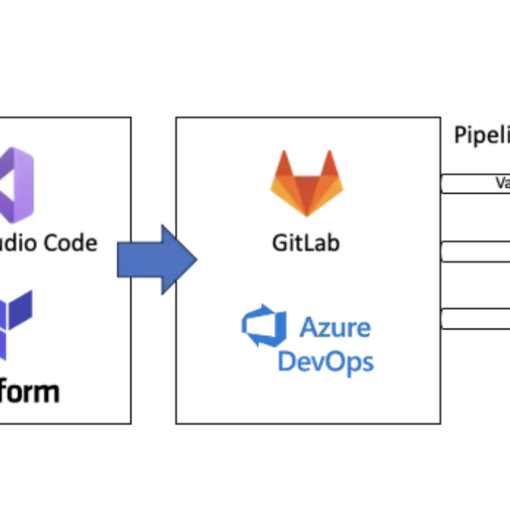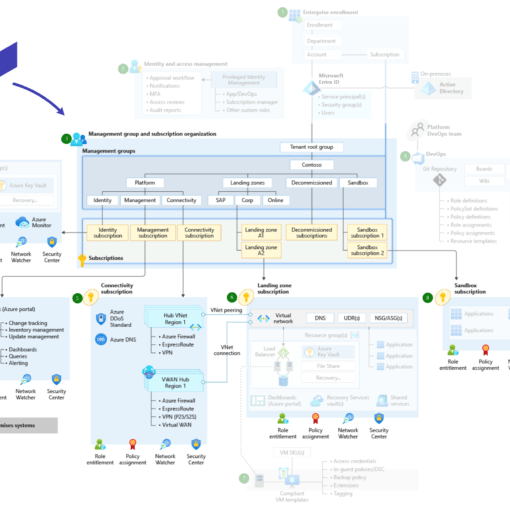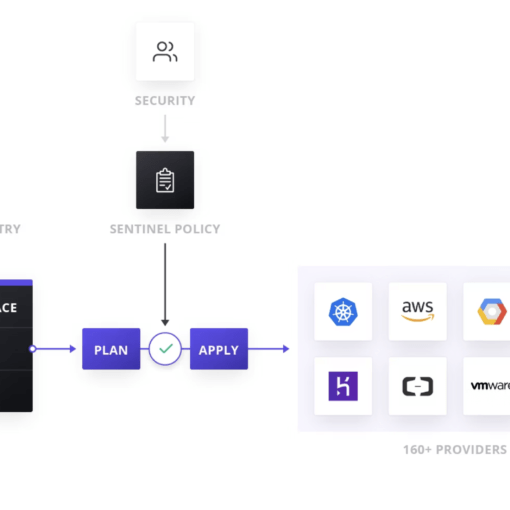Terraform, by HashiCorp, has become a cornerstone for managing infrastructure as code (IaC). As cloud environments grow more complex, leveraging advanced Terraform techniques is crucial for maintaining efficient, scalable, and robust infrastructure. This blog delves into sophisticated Terraform practices that go beyond the basics, ensuring you’re equipped to handle the most demanding infrastructure challenges.
1. Dynamic Blocks and For-Each Loops
Dynamic blocks and for-each loops can simplify and enhance your Terraform configurations by reducing redundancy and improving readability.
Dynamic Blocks Example
Dynamic blocks allow you to create repeated nested blocks within resources dynamically.
resource "aws_security_group" "example" {
name = "example"
description = "Example security group"
vpc_id = aws_vpc.main.id
dynamic "ingress" {
for_each = var.ingress_rules
content {
from_port = ingress.value.from_port
to_port = ingress.value.to_port
protocol = ingress.value.protocol
cidr_blocks = ingress.value.cidr_blocks
}
}
}
variable "ingress_rules" {
description = "List of ingress rules"
type = list(object({
from_port = number
to_port = number
protocol = string
cidr_blocks = list(string)
}))
default = [
{
from_port = 80
to_port = 80
protocol = "tcp"
cidr_blocks = ["0.0.0.0/0"]
}
]
}For-Each Example
Using for_each to manage multiple resources dynamically:
resource "aws_instance" "example" {
for_each = var.instance_configs
ami = each.value.ami
instance_type = each.value.instance_type
tags = {
Name = each.value.name
}
}
variable "instance_configs" {
description = "Map of instance configurations"
type = map(object({
ami = string
instance_type = string
name = string
}))
default = {
instance1 = {
ami = "ami-123456"
instance_type = "t2.micro"
name = "Instance 1"
},
instance2 = {
ami = "ami-654321"
instance_type = "t2.micro"
name = "Instance 2"
}
}
2. Custom Modules for Reusability
Creating custom modules promotes reusability and consistency across your infrastructure.
Custom Module Example
Let’s create a reusable module for an EC2 instance.
Module Directory Structure:
modules/
└── ec2-instance/
├── main.tf
├── variables.tf
└── outputs.tfmain.tf:
resource "aws_instance" "example" {
ami = var.ami
instance_type = var.instance_type
tags = var.tags
}variables.tf:
variable "ami" {
description = "AMI ID"
type = string
}
variable "instance_type" {
description = "Instance type"
type = string
}
variable "tags" {
description = "Tags for the instance"
type = map(string)
default = {}
}outputs.tf:
output "instance_id" {
description = "The ID of the EC2 instance"
value = aws_instance.example.id
}Using the Module:
module "ec2_instance" {
source = "./modules/ec2-instance"
ami = "ami-123456"
instance_type = "t2.micro"
tags = {
Name = "ExampleInstance"
}
}3. Managing Secrets with Vault Integration
Integrating HashiCorp Vault with Terraform ensures secure management of sensitive data.
Vault Integration Example
First, configure the Vault provider:
provider "vault" {
address = "https://vault.example.com"
token = "s.yourvaulttoken"
}Retrieve secrets from Vault:
data "vault_generic_secret" "example" {
path = "secret/data/myapp/config"
data_json = jsonencode({
secret1 = "value1"
secret2 = "value2"
})
}
resource "aws_db_instance" "example" {
identifier = "example-db"
engine = "mysql"
instance_class = "db.t2.micro"
allocated_storage = 10
username = data.vault_generic_secret.example.data["username"]
password = data.vault_generic_secret.example.data["password"]
db_subnet_group_name = "default"
skip_final_snapshot = true
}4. State Management with Workspaces
Workspaces allow you to manage different environments (e.g., development, staging, production) within a single configuration.
Workspaces Example
Create and use a workspace:
terraform workspace new dev
terraform workspace new staging
terraform workspace new prod
terraform workspace select dev
terraform applyReference the current workspace in your configuration:
resource "aws_s3_bucket" "example" {
bucket = "my-app-${terraform.workspace}-bucket"
acl = "private"
}Mastering advanced Terraform techniques can significantly enhance your infrastructure management capabilities. By employing dynamic blocks, custom modules, secure secret management with Vault, and effective workspace utilisation, you can create robust, scalable, and secure cloud environments. As you continue to refine your Terraform skills, these advanced practices will ensure that your infrastructure is not only efficient but also resilient and adaptable to changing requirements.
Stay tuned for more deep dives into Terraform and other infrastructure as code tools, and happy coding!




